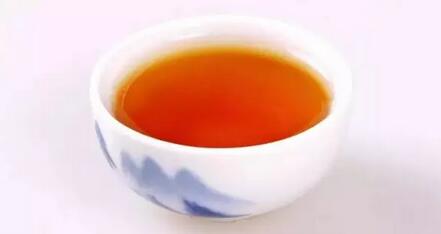Tea is harvested from tea plants in two seasons. The tea picked around Qingming is called delicate tea and is the basic material for green tea, while the tea harvested in summer and autumn is called coarse tea, with black tea tea leaves generally being picked in summer.
Tea is harvested from tea plants in two seasons. The tea picked around Qingming is called delicate tea and is the basic material for green tea, while the tea harvested in summer and autumn is called coarse tea, with black tea tea leaves generally being picked in summer.

Only "coarse tea" contains rich trace elements, vitamins, and polysaccharides. Just like eating an unripe sour apple versus a ripe one, the components undergo a qualitative change. Therefore, "coarse tea" is emphasized in tea therapy for treating certain diseases. Modern medical research also supports that "coarse tea" has more abundant contents than delicate tea.
It is important to note that "coarse tea" does not refer to inferior tea but rather mature tea leaves compared to delicate tea, also known as old tea.

One misconception needs clarification. Tea gardens reserved for harvesting old tea do not allow spring tea picking. Coarse tea leaves must reach maturity to become standard raw materials for black tea. Such leaves have more complete photosynthesis, and picking tea buds before harvesting coarse tea would reduce the quality of black tea. Black tea is a typical mature tea, harvested in summer and autumn. Research shows it provides the most abundant substances among all tea types.
Tea cannot replace medicine, and medicine cannot replace tea.
Black tea cannot substitute for medicinal drugs. "Medicine" refers to prescribed drugs with clear compositions and effects, approved by national regulatory authorities, differing from daily health products that prevent diseases and promote well-being. Black tea has gastrointestinal调理 and daily health functions, serving as a wellness beverage that addresses亚健康 issues. The health concept of "drinking black tea to reduce medication" aligns with traditional Chinese medicine's preventive philosophy: "Medicine is not as good as food, and food is not as good as tea."

Modern medicine and ancient Chinese medicine have entered multidisciplinary and multi-system fields. Any single substance participates in the vast project of life science. It is worth noting that from the ancient legend of "Shennong tasting hundreds of herbs, encountering 72 poisons in a day, and being cured by tea" to Wu Lizhen, the pioneer of tea planting, the medicinal effects of tea were discovered. In Li Shizhen's Compendium of Materia Medica, tea's medicinal value is highly regarded. In other words, tea was initially "medicine." Due to its low toxicity and health benefits, it was ultimately classified as a "beverage" by ancestors. Thus, while it cannot replace "medicine," medicine also cannot replace "tea."